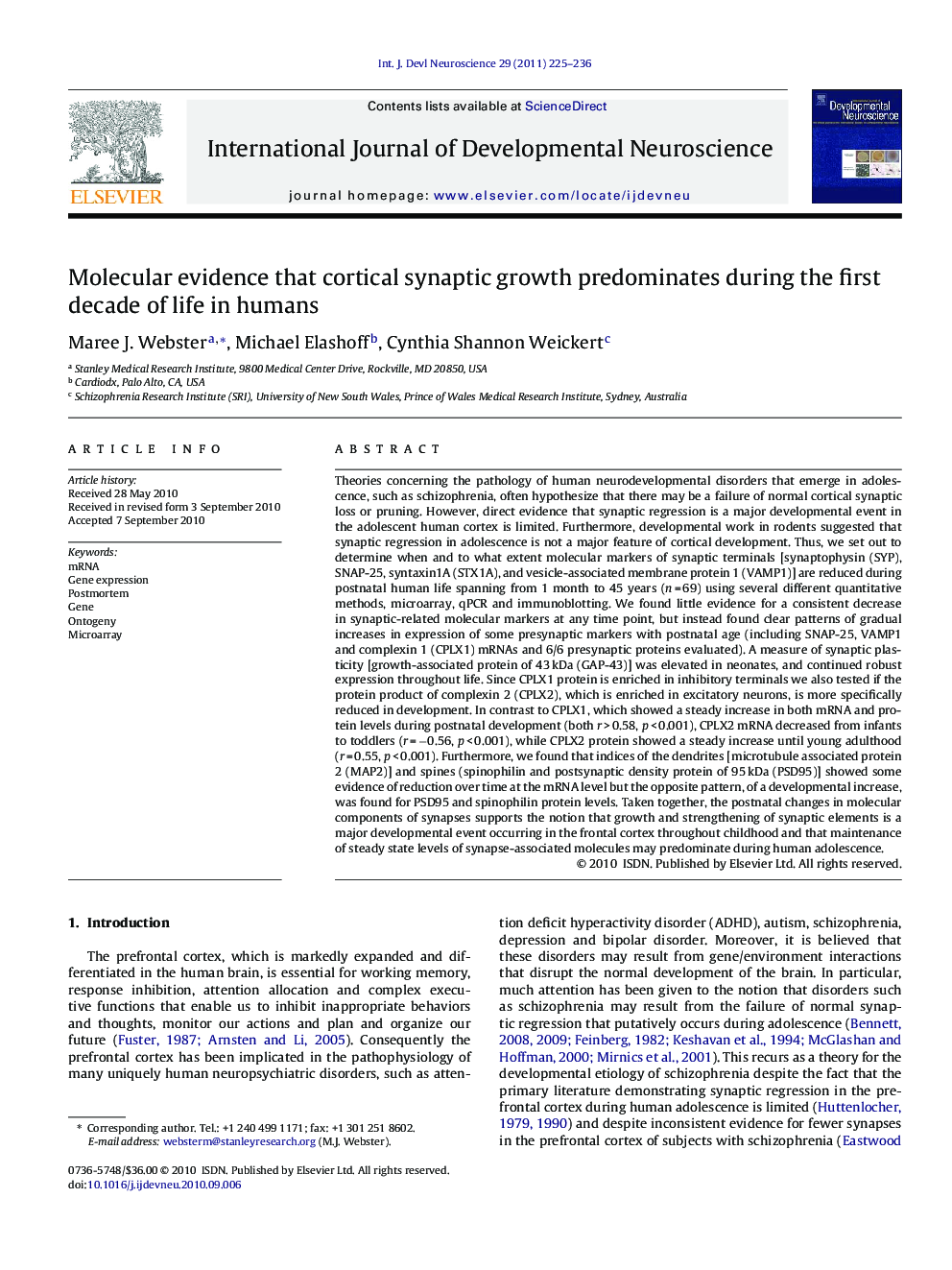| Article ID | Journal | Published Year | Pages | File Type |
|---|---|---|---|---|
| 2786620 | International Journal of Developmental Neuroscience | 2011 | 12 Pages |
Theories concerning the pathology of human neurodevelopmental disorders that emerge in adolescence, such as schizophrenia, often hypothesize that there may be a failure of normal cortical synaptic loss or pruning. However, direct evidence that synaptic regression is a major developmental event in the adolescent human cortex is limited. Furthermore, developmental work in rodents suggested that synaptic regression in adolescence is not a major feature of cortical development. Thus, we set out to determine when and to what extent molecular markers of synaptic terminals [synaptophysin (SYP), SNAP-25, syntaxin1A (STX1A), and vesicle-associated membrane protein 1 (VAMP1)] are reduced during postnatal human life spanning from 1 month to 45 years (n = 69) using several different quantitative methods, microarray, qPCR and immunoblotting. We found little evidence for a consistent decrease in synaptic-related molecular markers at any time point, but instead found clear patterns of gradual increases in expression of some presynaptic markers with postnatal age (including SNAP-25, VAMP1 and complexin 1 (CPLX1) mRNAs and 6/6 presynaptic proteins evaluated). A measure of synaptic plasticity [growth-associated protein of 43 kDa (GAP-43)] was elevated in neonates, and continued robust expression throughout life. Since CPLX1 protein is enriched in inhibitory terminals we also tested if the protein product of complexin 2 (CPLX2), which is enriched in excitatory neurons, is more specifically reduced in development. In contrast to CPLX1, which showed a steady increase in both mRNA and protein levels during postnatal development (both r > 0.58, p < 0.001), CPLX2 mRNA decreased from infants to toddlers (r = −0.56, p < 0.001), while CPLX2 protein showed a steady increase until young adulthood (r = 0.55, p < 0.001). Furthermore, we found that indices of the dendrites [microtubule associated protein 2 (MAP2)] and spines (spinophilin and postsynaptic density protein of 95 kDa (PSD95)] showed some evidence of reduction over time at the mRNA level but the opposite pattern, of a developmental increase, was found for PSD95 and spinophilin protein levels. Taken together, the postnatal changes in molecular components of synapses supports the notion that growth and strengthening of synaptic elements is a major developmental event occurring in the frontal cortex throughout childhood and that maintenance of steady state levels of synapse-associated molecules may predominate during human adolescence.
Research highlights▶ Over exuberance of synaptic pruning is a prevailing developmental hypothesis of schizophrenia. ▶ Direct evidence for synaptic pruning during adolescent human cortical development is limited. ▶ Multiple synaptic markers provided little evidence for synaptic pruning during adolescence. ▶ Gradual increases in expression of synaptic markers occurred during the first 10 years of life. ▶ Growth and strengthening of synaptic elements occurring in frontal cortex through childhood. ▶ Maintenance of levels of synapse-associated molecules predominates during human adolescence.
